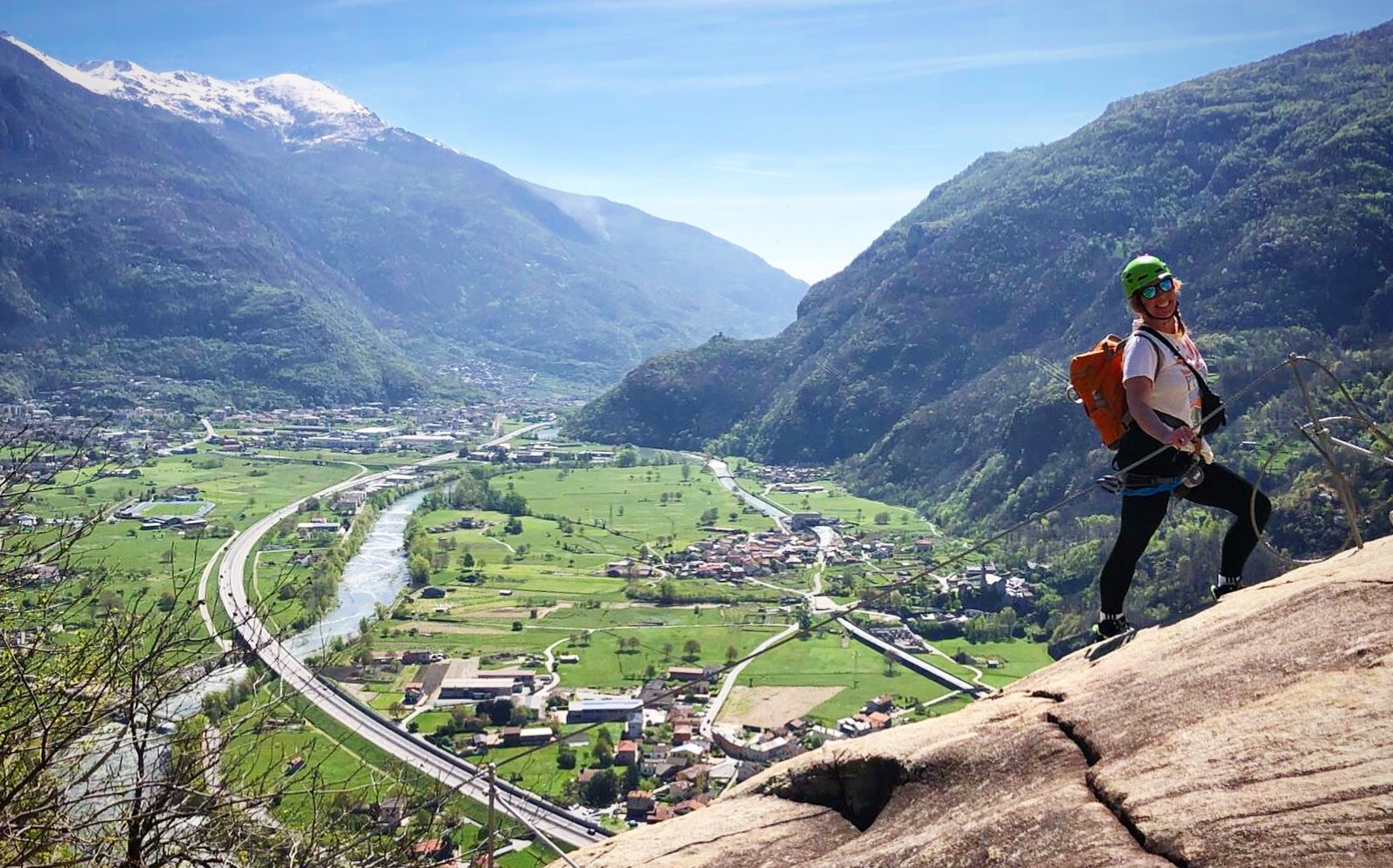
What is Via Ferrata?
I recently booked myself onto an activity break with Gressoney Adventures in Italy. The list of activities available included Via Ferrata. I had a vague idea of what was involved having seen a few posts on social media – I got the impression it was easier than climbing but more extreme than hiking. I signed up to find out for myself – what exactly is Via Ferrata?

What is Via Ferrata?
Via Ferrata translates as ‘Iron Way’. Essentially you follow a course of iron cables fixed to the mountainside whilst being attached to a climbing harness with a set of carabiners. The course often combines steep walks, iron steps, rungs, chains and ladders to guide you along the trail. Whilst not for the faint hearted the security of being attached to the cables offers an additional level of security for those wanting take their mountain adventures to the next level.

What do you need?
If you’re trying Via Ferrata for the first time you should go with an experienced guide. This is why adventure breaks like Gressoney Adventures are perfect for trying new activities like Via Ferrata. In terms of kit you’ll need a helmet, harness and a Via Ferrata lanyard (designed to work as a shock absorber should you fall) – you might also want to take gloves, climbing shoes and a backpack. A guide should provide you with the essential kit you might need for your first climb.

My experience
I climbed the Via Ferrata delle Peredrette, just outside Donnas in the Aosta Valley. The area is utterly stunning and we were blessed with one of the first really warm days of spring for our climb. My guide, Herve kitted me out with everything I needed including helmet, harness and lanyard. After a short hike we were at the start of the Via Ferrata. I really didn’t know what to expect but the start of the course was a gentle incline which really helped build my confidence.

I was so focused on clipping myself in and watching where I put my feet I often forgot the vast scenery around me. Each time I stopped to catch my breath it blew me away. The majority of the course was well within my capabilities – there were two parts that stood out as giving me the wobbles. Both parts were not particularly technically challenging but the drops behind me were steep and sheer. It was the realisation of how high I was rather than the course itself that was tricky.

The worst bit was climbing a set of about 5 steps with a drop that made cars look the size of ants behind me. I was coaxed up by Herve with words of encouragement about how this was easy etc. I was so relieved to get to the top I punched him in the shoulder shouting I can’t die I’ve got babies! But, I made it to the top and felt immensely proud that I completed every part of the trail and forgiving Herve in the process. I definitely want to have another bash at Via Ferrata.

Where can I try?
Most Via Ferrata courses are in the Alps and the Dolomites. The sport isn’t that well know here in the UK. However, I’ve tracked down a few places that you can try Via Ferrata for yourself right here on our sunny shores..
Cornwall – Via Ferrata Cornwall
Wales – Zip World
Scotland – Vertical Descents
Cumbria – Honister Slate Mine
Yorkshire – How Stean Gorge
If you fancy hearing more about activity holidays hosted by Gressoney Adventures please visit their website here.






